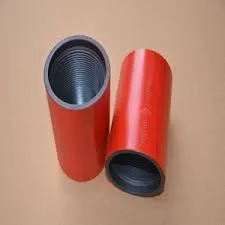what is the difference between casing and tubing?
Understanding the Difference Between Casing and Tubing in Oil and Gas Industry
In the oil and gas industry, casing and tubing play crucial roles in the extraction of hydrocarbons from beneath the Earth’s surface. Although they may seem similar at first glance, these two components serve distinct purposes and have different characteristics. Understanding the differences between casing and tubing is essential for anyone involved in the drilling and production processes.
What Is Casing?
Casing refers to the series of steel pipes that are installed in the drilled wellbore to stabilize the well. The primary purpose of casing is to protect the wellbore walls from collapse, minimize the risk of pollution to groundwater, and isolate the target production zones from each other. Casing is typically installed in sections, with each section being referred to as a string.
There are several types of casing, the most common being surface, intermediate, and production casing. Surface casing is the first layer installed and is used to protect groundwater and maintain well integrity at shallow depths. Intermediate casing follows and is used to isolate pressure zones within the well. Finally, production casing is the last level installed to facilitate the flow of hydrocarbons from the reservoir to the surface.
Casing is cemented into place, which provides additional stability and seals off any potential pathways for fluids that could contaminate surrounding formations. The cementing process is critical as it ensures a reliable barrier between the well and the surrounding earth.
What Is Tubing?
In contrast, tubing is a smaller diameter pipe that is used to transport hydrocarbons from the production zone to the surface. It is installed inside the casing and is specifically designed to carry oil, gas, or water. Unlike casing, tubing is typically removed and replaced if necessary, allowing for maintenance or upgrades without the need to drill a new well.
Tubing comes in various sizes and grades, designed to withstand the specific pressures and corrosive environments encountered during production. It is essential that tubing be properly selected and installed to ensure efficient and safe transport of hydrocarbons. Various completion techniques can be employed to enhance the production capability of the tubing, including perforating the casing in specific locations or installing packers to isolate certain intervals of the well.
what is the difference between casing and tubing?

Key Differences Between Casing and Tubing
1. Function and Purpose The primary difference between casing and tubing lies in their function. Casing is employed to provide structural support and protect the wellbore, while tubing serves as the conduit for hydrocarbons to flow from the reservoir to the surface.
2. Installation Process Casing is set first during the drilling process and is usually cemented in place. Tubing is installed afterward, and it is often removable for maintenance or replacement over the life of the well.
3. Material and Design Both casing and tubing are generally made of steel, but they come in different specifications and weights. Casing is thicker and designed to withstand external pressures, while tubing is lighter and optimized for internal fluid flow.
4. Maintenance and Longevity Casing is a permanent fixture intended to last for the life of the well and beyond, providing barriers against collapse and contamination. Tubing, however, may require replacement or repair as it is subject to wear and can be affected by corrosion, scaling, and other factors over time.
5. Cost Implications The cost associated with casing is typically higher than tubing due to its thickness, weight, and the cementing process involved. However, tubing also incurs costs over time due to its potential need for replacements.
Conclusion
In summary, while casing and tubing are both essential components of oil and gas wells, they serve very different purposes. Casing ensures well integrity and protects the environment, while tubing facilitates the efficient transportation of hydrocarbons to the surface. A thorough understanding of these differences is critical for successful drilling and production operations in the oil and gas sector.
-
Unlock the Benefits of Pup Joints for Your OperationsNewsOct.31,2024
-
The Quality of Casing Couplings from ChinaNewsOct.31,2024
-
The Essential Role of Pup Joints in Drilling OperationsNewsOct.31,2024
-
The Benefits of Tubing Couplings for Your ProjectsNewsOct.31,2024
-
Enhance Your Drilling Operations with Tubing Pup JointsNewsOct.31,2024
-
Elevate Your Drilling Operations with Tubing CrossoversNewsOct.31,2024







